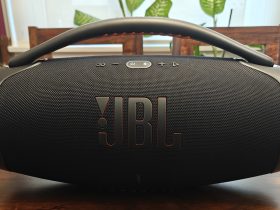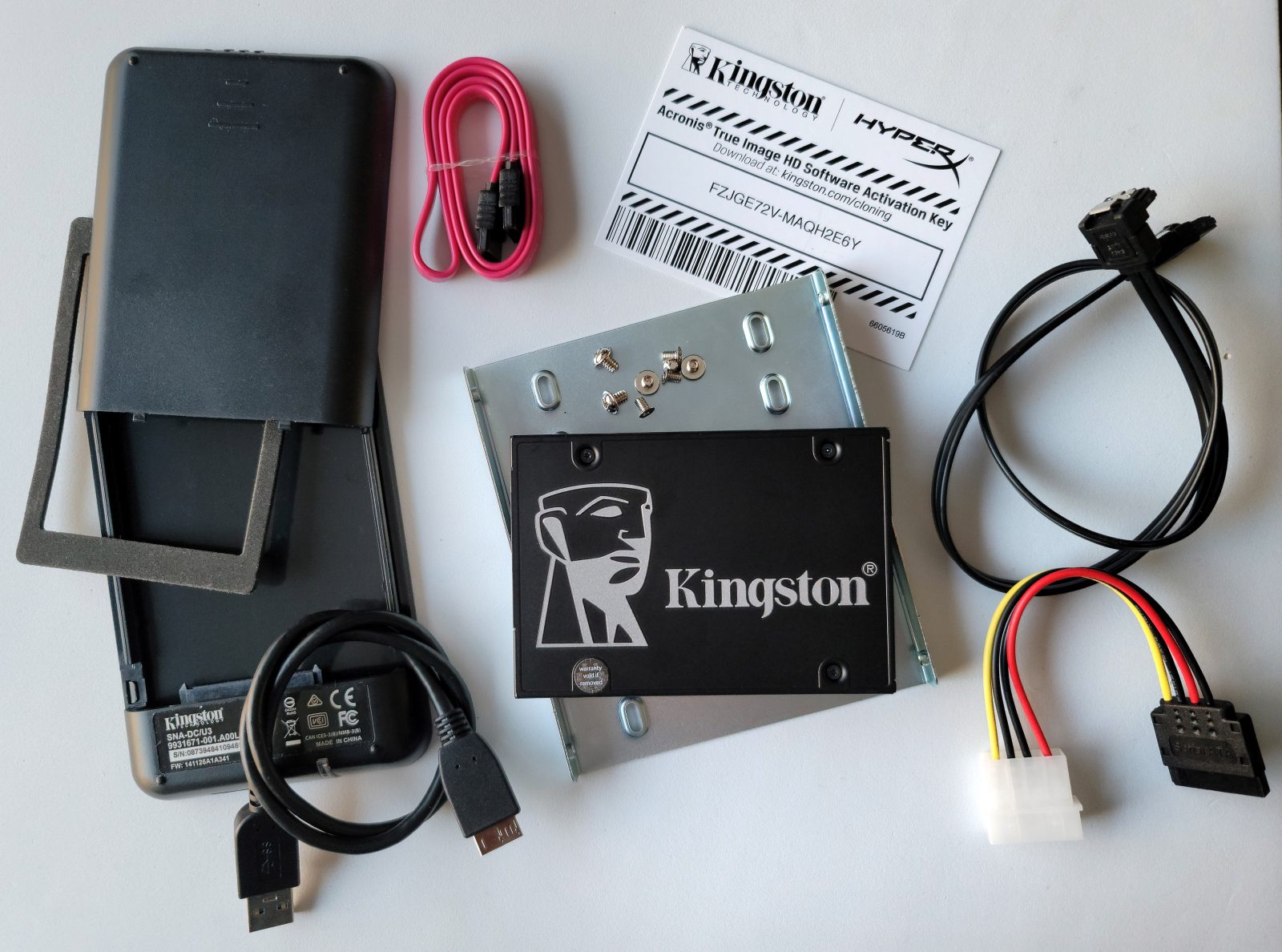SATA (Serial Advanced Technology Attachment) is still alive and doing well, thank you.
Now 18 years old, SATA connects hard drives, CD-ROM players and more, to a computer’s system. Originally designed for spinning hard drives, SATA now works with SSD (solid state drive) memory drives featuring six times faster speeds than spinning drives, no moving part, smaller size, less heat, no latency, less laptop battery draw, and simple cable connection.
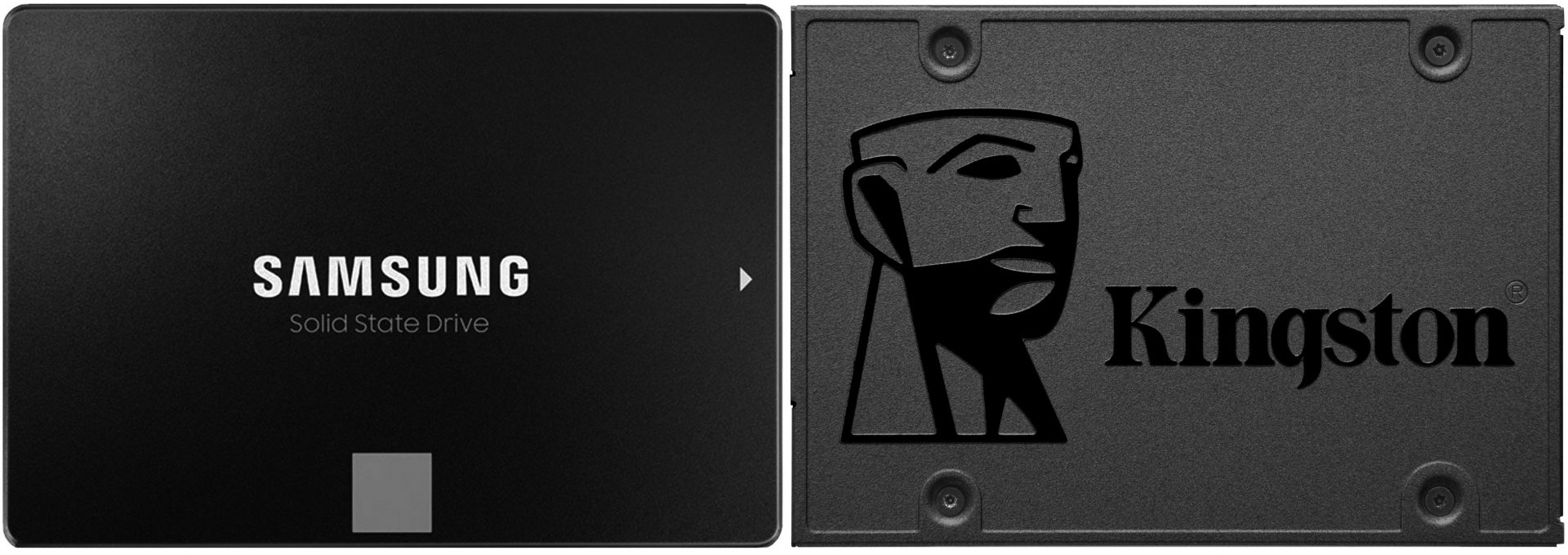
SATA SSD 2.5” drives affordably bridge slower hard drives and the top computer NVMe SSD M.2 format drive sporting even faster seven times speeds (that’s about 45 times faster than the original spinning hard drive, if you are keeping track). These cable-less super-fast drives are chewing gum stick-sized and fit in small one-inch M.2 slots in PCs with one tiny screw. Newer NVMe SSD drives supporting PCIe 4.0 run even faster.
SSD SATA drives start at a very affordable $30 for 125GB, basically doubling in size and price for 256GB and 512GB and start tapering off at about $200 for 1TB. Larger capacities for 2TB average $300 while 4TB will cost over $550. Compare that to about $120 for 4TB internal or external SATA spinning disk platter hard drive. Industry observers predict that in five years, consumer SSD memory prices will be lower than hard drives. Good riddance!
What Makes SSD Memory Popular?
SATA SSD drives give users the biggest bang for their buck. They connect to computers in four ways:
- Internally to a computer SATA connector as a secondary storage drive to existing PCs.
- Internally as the main OS drive that runs your PC.
- Externally in a 3.5” case connecting to your PC via a special USB 3.0 cable.
- They also come in chewing gum-size for M.2 SATA slots mentioned above and fit in third-party external cases the size of a small remote control. In essence, you now have 1TB pocket-sized USB “stick” for about $170! They connect VIA USB with a small cable and are several times cheaper than a pocketful of common flash drives.
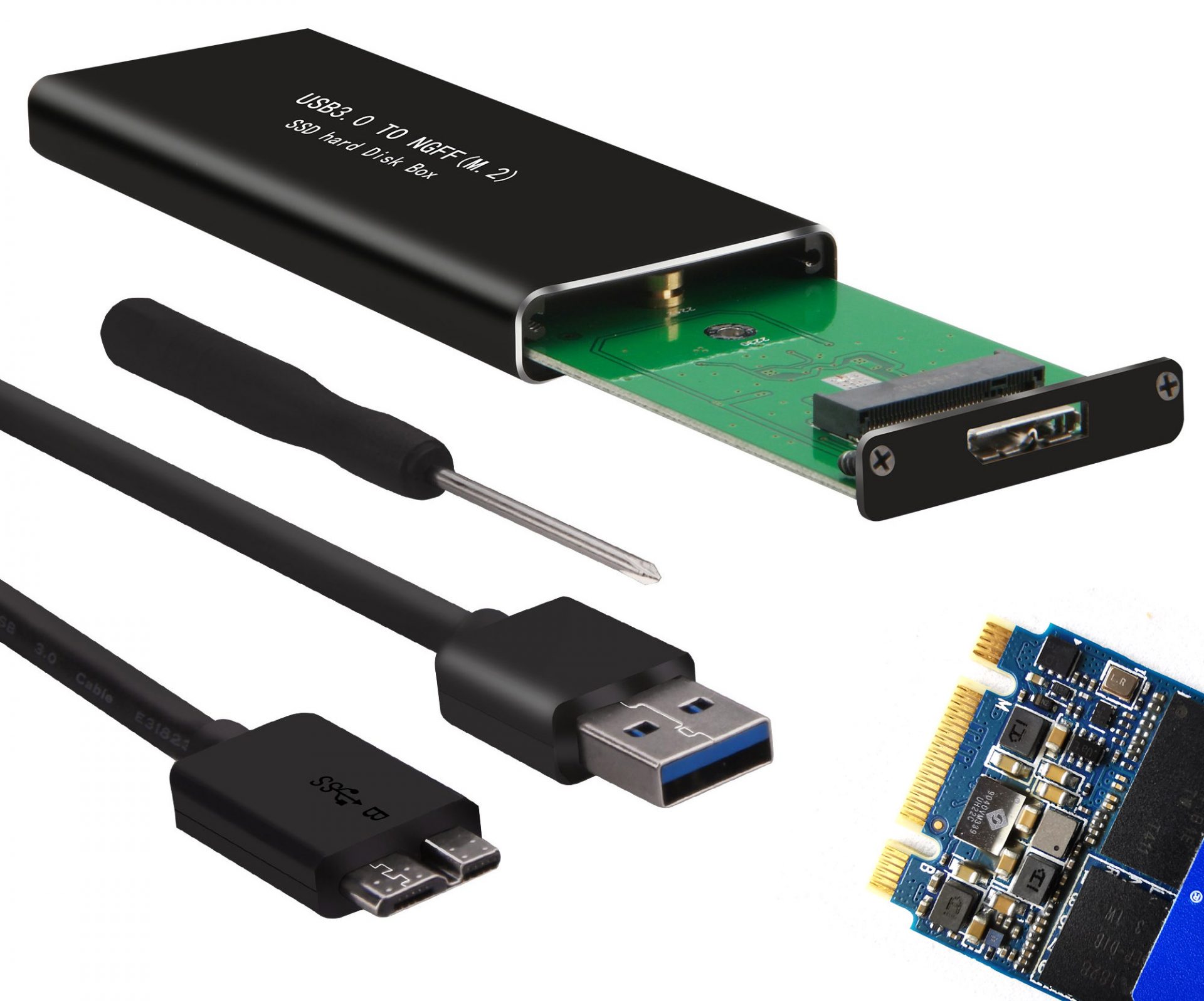
Despite its huge performance advantages, SSD NAND Flash used today has one downside: lifespan. There is a finite number of times each memory cell can have data written on it. As memory cells reach their limit, the whole drive starts losing size and speed. Each SSD model’s lifespan specification is measured in TBW (Terabytes Written) and DWPD (Drive Writes Per Day). Thankfully, each SSD drive has a controller that ensures the writes for all memory cells are spread out equally and the good news is a consumer averaging 100GB of data written daily would typically be able to keep their drive for 17 years! Many online programs can measure an SSD’s “age.” It’s also worth noting that the larger the drive capacity, the longer its life span. So, a 1TB SSD SATA drive would have ample space and would last even longer.
How to Shop Around for SATA SSD Drives
Shopping around for the best SSD SATA drive? The majority of brands have similar Read/Write specs of 500MB/s under ideal conditions. But in the real world the better made models boast more than 550MB/s, a difference most folks would not notice in everyday use, unless you are a heavy-duty data transfer freak like me. How do you decide on which brand to get? Big brands have big bucks for pervasive marketing so you will see them pop up more online.
Let’s check out the popular Samsung 870 EVO and Kingston KC600 2.5” SSD SATA drives . They both used space-saving type NAND memory available in up to 4TB and 2TB sizes, respectively. They have similar hardware security features and onboard cache for faster file handling.
How Do They Compare?
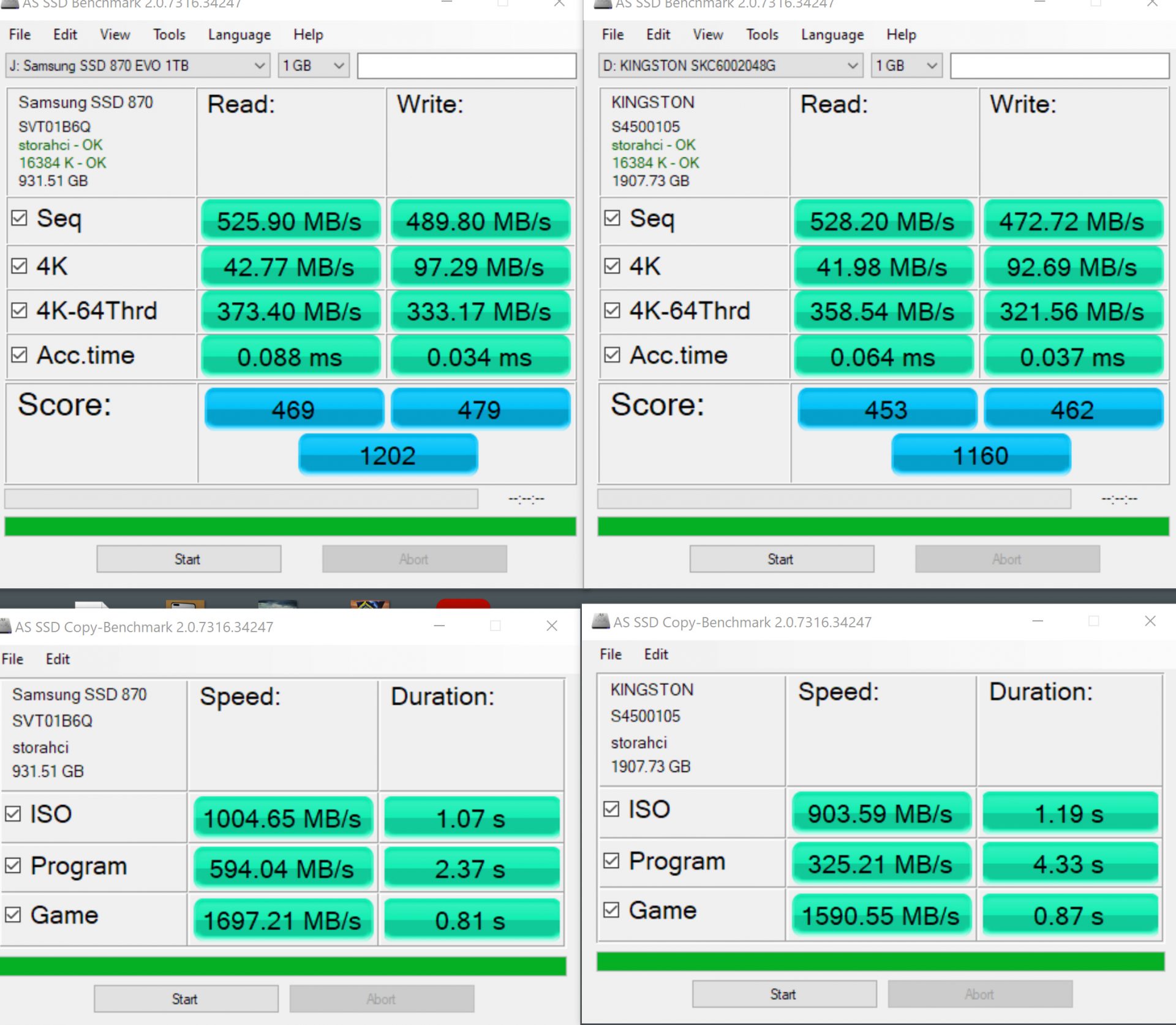
For benchmarking, I used the free AS SSD downloadable from any tech site and the online web app www.UserBenchmark.com as well as the paid for UL PCMark 10. Then I put both drives through my own personal torture tests.
- Their packaging boasts almost identical Read speeds of 560MB/s – 550MB/s respectively and 530MB/s – 520MB/s Write speeds. These performance numbers are under ideal and approach SATA’s 600MB/s maximum speed.
- PCMark 10 succinctly rated the Samsung 870 EVO 1TB as top dog with a score of 3151 bested only by Intel’s Optane technology, not applicable for consumers. The KC600 came in at 2358
- AS SSD benchmarking the 870 EVO scored 1202 versus the KC600 1160 being better at reading and writing smaller files.
- The UserBenchmark also rated the 870 EVO higher in the 115% percentile compared to the 112% of the KC600.
- In my own real-world tests with a mature but stable Windows 10 environment I measured the time it took to copy and move small and large files.
- Copying a 5GB cluster of smaller 16,000 files from a much faster Intel 760p NVMe SSD drive the 870 EVO was 20% faster completing in 14.7 seconds.
- In copying a 20GB cluster of five files including a 10GB video the 870 EVO was 25% faster completing in 45.6 seconds. Compare that to the 11 minutes it took for my ioSafe spinning hard drive to complete.
- Copying the same 5GB cluster of 16,000 smaller files in the same drive, a challenging process of a drive reading and copying on itself, the KC600 was an impressive 48% faster completing in 21.12 seconds.
Buying Considerations
At competing prices and varying spot sales, both SATA SSD drives are comparable in price.
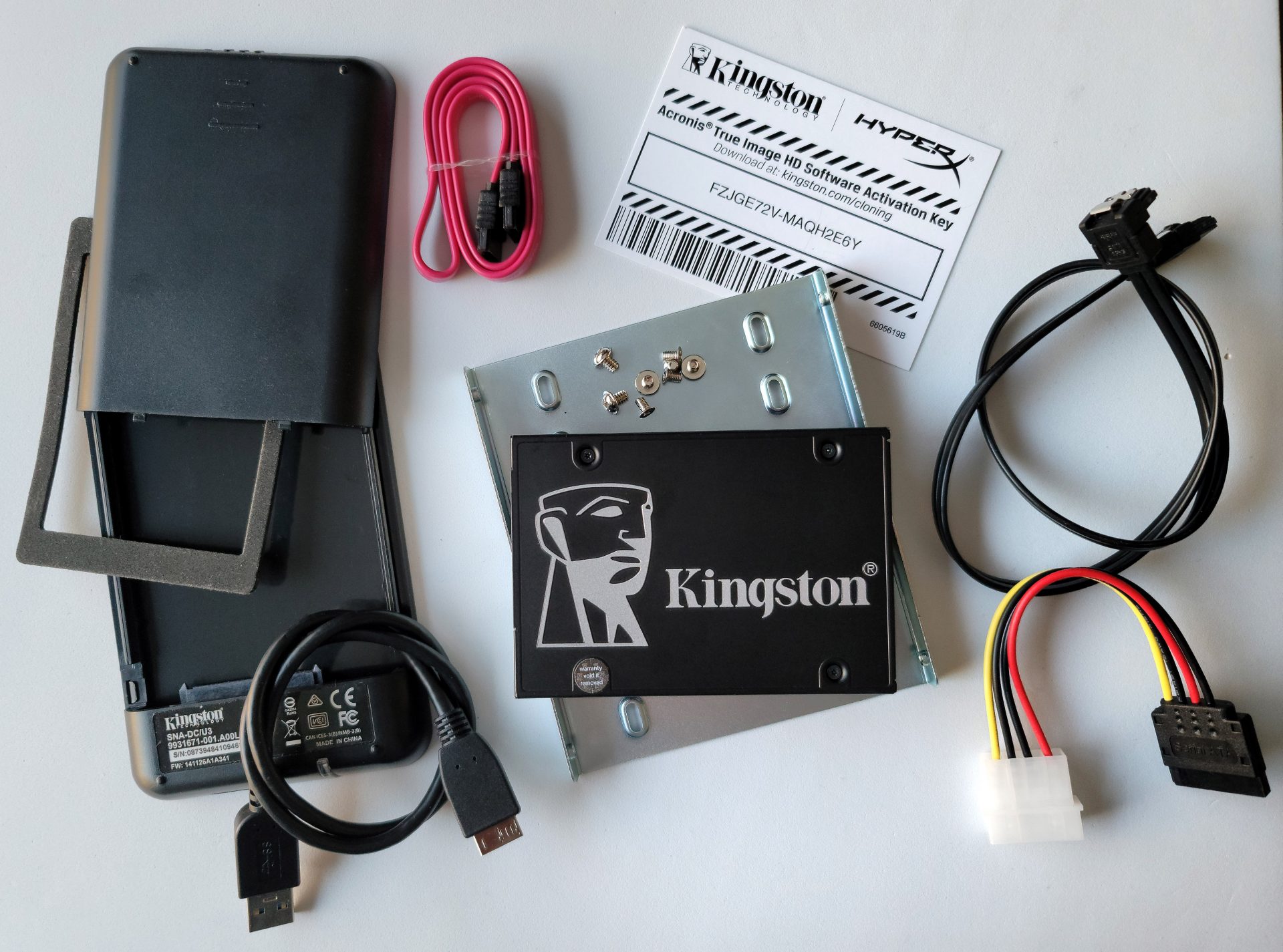
The Kingston KC600 has one advantage some users will like with optional bundling of their SSD Installation kit available for all the KC600 models with the additional designation of the “B” letter on the model name. It includes internal mounting hardware with data and power cabling, a handy external pocket case with USB 3.0 cabling and an activation key to Acronis software for transferring files or making backup image copies of entire drives. This costs between $10 – $15 in the bundle compared to the separate $35 purchase price which will work on any 2.5” SSD SATA brand.
Both come with a five-year limited warranty lifespan based on your data write volume, mentioned above. They start with 150 TB TBW for the 250GB size (you are good for 100GB writes a day for about 19 years!) to 1,200 TB TBW for the 2TB models. Samsung’s additional 4TB size model has a 2,400 TB TBW which will basically outlive any consumer.

